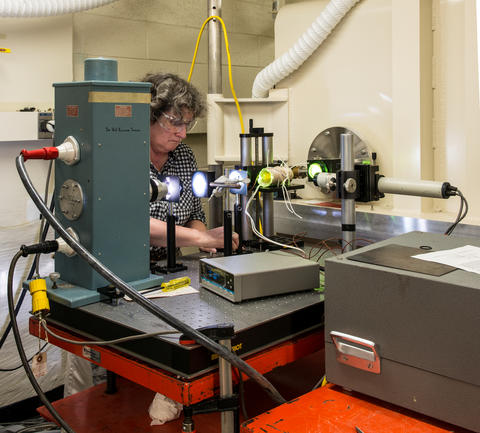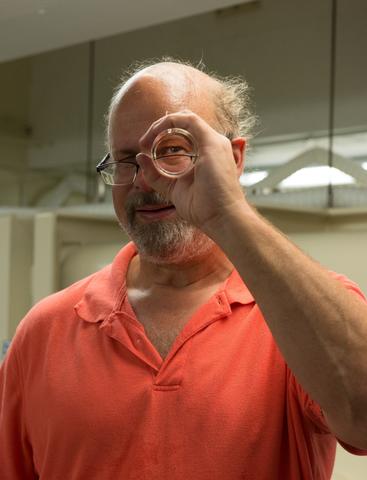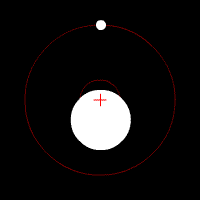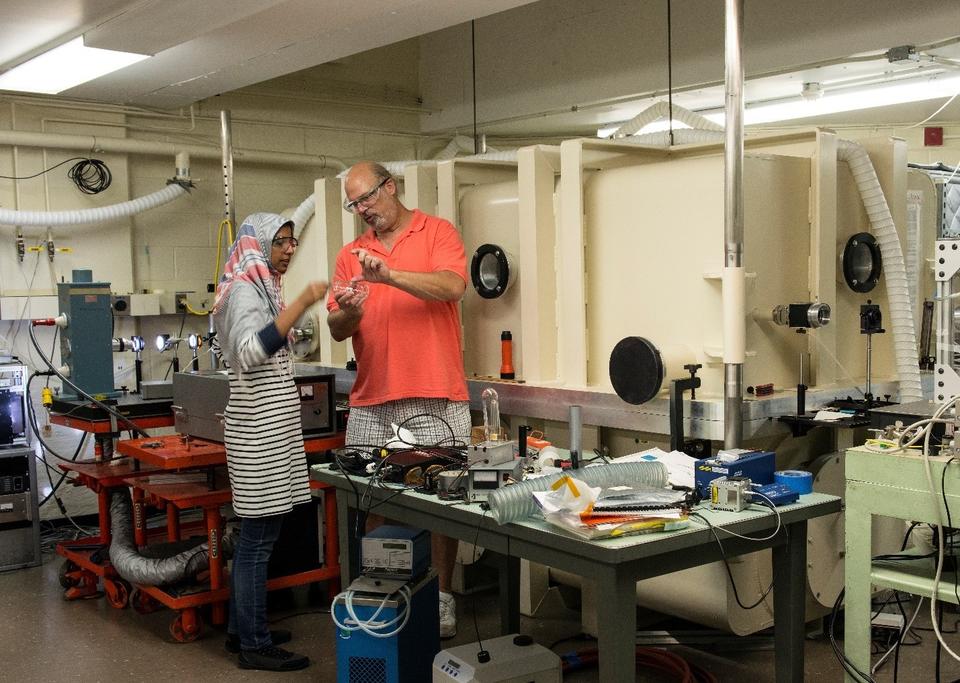
NIST physicist Gillian Nave adjusts alignment of the light beam that passes from the xenon source at left, through the absorption cell (center, wrapped in brown tape), and into the spectrometer chamber at right.
Ask most folks what they would need to find planets orbiting distant stars, and very few will list a bottle of iodine.
Yet that element plays a vital role in the search for extrasolar planets (exoplanets) in the form of devices called “iodine absorption cells”: sealed glass cylinders about the size of a soup can containing a thin gas of iodine molecules.
The optical properties of the gas – meticulously measured at the National Institute of Standards and Technology (NIST) – serve as an unvarying benchmark to detect fluctuations in light from remote stars caused by orbiting planets. Analyzing those fluctuations has been responsible for the discovery of more than 500 exoplanets so far.
Each cell must be carefully calibrated individually. “I’ve been coming here for 15 years, doing exactly that,” said celebrated exoplanet hunter Paul Butler of the Carnegie Institution of Washington, creator of the original iodine cell. He brings his cells to NIST for calibration every couple of years – most recently in early October, 2017 – to have them checked with NIST’s Fourier-transform spectrometer (FTS), which measures spectral details to extremely high accuracy.

The FTS is used for many applications, including support for one of the two main methods of detecting exoplanets*. The first is to watch a star and see if its light output dims periodically whenever a planet passes in front of it. That kind of alignment is rare, and best seen from space-based instruments such as the Kepler telescope.
NIST calibrations impact the other method, which relies on the Doppler effect. That’s what makes an ambulance siren’s pitch rise as it comes toward you, and fall as it moves away. The same effect that occurs in sound waves can stretch or compress the electromagnetic waves that make up the spectrum of light coming from a star when it is approaching or receding from Earth.

Why would a star move like that? The reason is that it’s not completely true to say that a planet orbits a star. In fact, both revolve around their common center of mass. (See animation.) The more massive the planet, the greater the star’s motion. When the star is moving toward Earth, the star’s spectrum is shifted toward shorter (bluer) wavelengths; when it is moving away, the spectrum is stretched toward longer (redder) wavelengths. By measuring the amount and frequency of those Doppler shifts, scientists can determine the existence of a planet 100 or more light years away and calculate its mass.
But the effects are extremely small. For example, Earth’s gravitational attraction causes the Sun – with a mass 333,000 times greater, and volume 1.3 million times larger – to move about 10 centimeters (4 inches) per second. Astronomers can’t measure such a small effect, but they can measure stars moving at only 1 meter (39 inches) per second. If, that is, they have something to measure it against.
“Doppler spectroscopy is a very flexible way of detecting planets,” said NIST physicist Gillian Nave, who manages the FTS operation. “But everything is moving ― the star, the Earth, your telescope. So, what you need is some reliable, fixed reference. We need to be able to measure the Doppler shift of the star’s light to a few parts in a billion. You’re talking about a huge star moving at the speed of somebody walking.”
One way to do that is to compare variations in the star’s light to a well-defined reference spectrum, provided by light emitted by special lamps – often calibrated at NIST – and then routed into the measurement instrument by optical fiber.
The other way employs iodine cells. When placed between a telescope and a spectrograph, the iodine molecules absorb specific wavelengths, subtracting them from the star’s incoming light. That absorption spectrum — which is known exactly from the calibration ― does not change while Doppler shifts occur in the star’s light over time. Once calibrated, a cell can serve as a reference on the telescope for decades.
Iodine is well-suited to the task because it has only one naturally occurring isotope, gives very sharp lines, and absorbs wavelengths in the visible range from green to orange where stellar motion is readily detectable. “It’s just this incredible intense forest of thousands of lines,” Butler said.

At NIST’s FTS, the light from the star is replaced with light from a high-intensity xenon lamp, producing a white-light spectrum without any sharp lines. All spectral detail results from iodine absorption, not the background source. The source light is filtered down to the region of the iodine lines, reducing noise in the final result. It then goes through the cell to the FTS, which can record the positions of the spectral lines to a few parts in a billion. Each cell takes roughly 30 minutes to measure. Cells characterized by NIST have been sent to telescopes in Hawaii, Chile, and Australia, with some of the new cells going to a telescope in South Africa.
“I don’t know precisely how many planets I’ve discovered,” Butler said. “It’s several hundred.” And he’s still looking for more at various telescopes equipped with his iodine absorption cells.
“But,” he said, “these things don’t work without Gillian’s magic.”
* The spectrometer is chiefly used for measuring high-precision atomic data for astrophysics and industry, with the results going into the NIST Atomic Spectra Database – an authoritative reference heavily used by researchers around the world.

